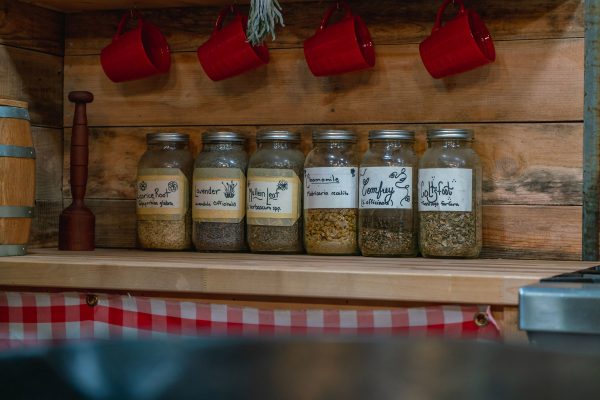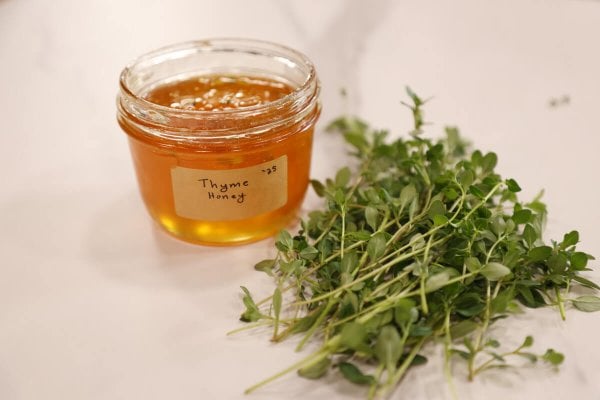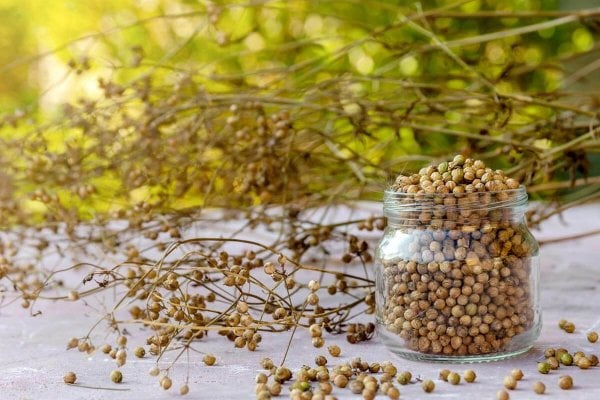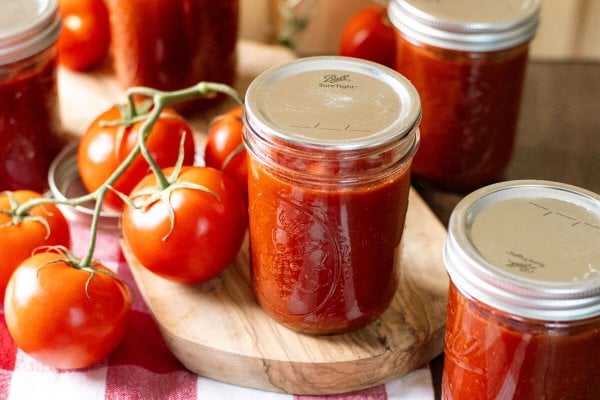Tulsi (Ocimum sanctum) is an herb for all seasons. Read on to learn the health benefits of tulsi, how to grow a tulsi plant, and how to use it to stock your natural medicine cabinet at home.
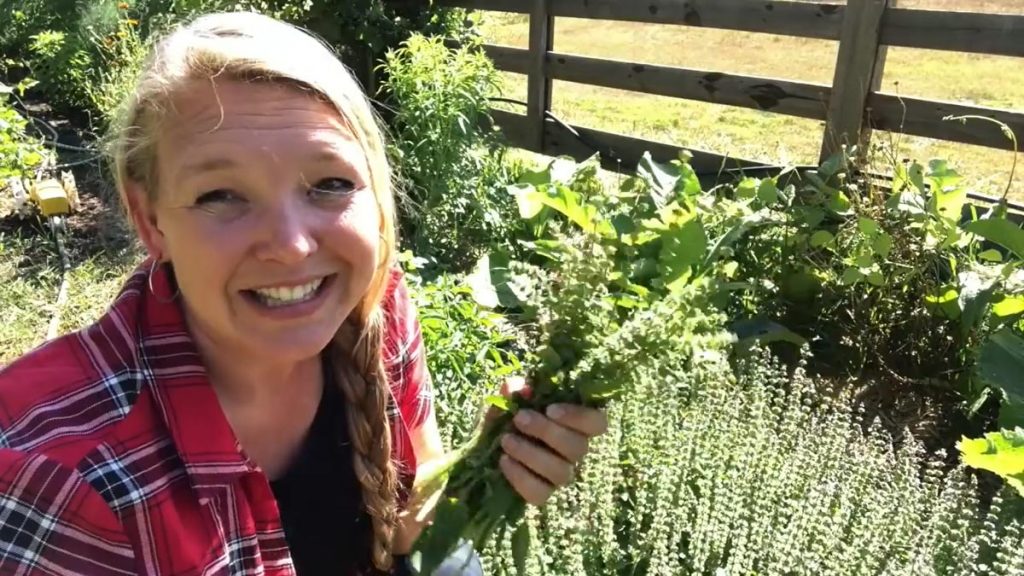
Tulsi, or holy basil, is considered one of the most beneficial medicinal herbs on the planet. “The Mother Medicine of Nature” is one of many names for this amazing herb. The healing properties range from treating anxiety to skin ailments and so much more.
Why I Love Tulsi (Holy Basil)
While I enjoy growing sweet basil for culinary purposes, a tulsi plant is one of my top 15 medicinal herbs to grow in my cottage garden for its medicinal properties and to boost the immune system naturally.
In today’s modern world, there is a rise in prescription medications engineered to help us cope with stress, but our family has decided to “go off the grid” with our healthcare and learn how to use herb medicine safely at home.
Tulsi is an adaptogen that is great for energy. It helps you adapt during stressful times and helps regulate the stress response. Personally, I love the way that Tulsi makes you feel very grounded and calm. Being an “idea” person, sometimes I need help letting my mind slow down and just be still, and Tulsi is amazing at aiding with this.
I like to say that the best medicinal herbs are the ones you will use, and even if all you have is a small container garden, you can grow tulsi. This guide will teach you how to use tulsi to get the most out of this wonderful herb.
It’s important to note that I am not a certified medical practitioner. This post is not intended to diagnose or treat but is for informational purposes only. Please contact your medical care professional before introducing new herbal remedies into your wellness routine.

What Is the Tulsi Plant
Ocimum tenuiflorum is the Latin name for tulsi, sometimes called holy basil, sacred basil, Indian basil or Tulasi. It comes from the Lamiaceae genus, the “mint” family.
This basil plant is native to the Indian subcontinent and grows throughout Asia. It’s considered a sacred plant in Hinduism. Often planted in the center of a four-sided structure in Hindu houses and courtyards. Even watering and caring for the herb is considered an act of worship.
Tulsi is used in folk and Ayurvedic medicine (a traditional system of Indian medicine). The Hindus believe its presence deepens meditation, purifies and protects.
While I don’t adhere to any of the above religious beliefs, they do show how important this herb is to many people… the simple reason for that is it really works!
Tulsi is a hardy perennial or annual (depending on the climate) herbaceous flowering plant or shrub. It has long oval, saw-toothed, hairy, green or purple leaves. It has a sturdy stem and grows one to three feet tall.
Its beautiful purple or white flowers attract pollinators and repel flies, acting as a good companion plant to benefit nearby plants. Tulsi is a flowering shrub that grows well outside but will grow in a pot inside.
This plant boasts peppery, clove-like flavors in culinary dishes, especially in Indian and Asian cuisines.

Tulsi vs. Sweet Basil
Tulsi (Ocimum tenuiflorum), often referred to as “The Queen of Herbs” and an “elixir of life,” is considered to be more of a medicinal plant with some culinary use.
Sweet basil (Ocimum basilicum), sometimes referred to as the “King of Herbs,” is widely used in culinary dishes and not as well known for its medicinal use.
They are both from the Lamiaceae genus, the “mint family,” yet they each have their place in the kitchen herb cabinet or herbal medicine cabinet.

Health Benefits of Tulsi
Tulsi’s leaves emit stimulating and healing properties offering medicinal benefits, making it a powerhouse among herbs.
- Stress Relief – Tulsi falls into the category of an adaptogen. It supports the body’s ability to adapt to stress. It brings resilience and a sense of grounding to one’s mental and emotional well-being. (Source)
- Treat Fevers – The peppery, clove-like flavor of tulsi leaves (when steeped in tea) can help lower the effects of fever when fighting off infections and colds or flu. (Source)
- Immunity Booster – Tulsi has high levels of antioxidants and micronutrients that are effective in keeping the common cold, flu and asthma at bay while also alleviating a sore throat. (Source)
- Heal Infections – Tulsi has antifungal, antiviral and antibacterial properties that treat infections and wounds. Because of its anti-inflammatory qualities, it reduces inflammation and speeds up the healing process. (Source)
- Reduces Blood Pressure – Studies show that tulsi reduces hypertension and high cholesterol levels. It alleviates depression, anxiety, headaches and insomnia associated with high blood pressure. (Source)

Ways to Prepare Tulsi
Here are a few ways to prepare tulsi to benefit from its healing benefits.
- Tea (Hot and Cold) – Instant herbal ice tea and immune-boosting hot tea using tulsi leaves and flowers are easy to prepare. The leaves are also an excellent flavor addition to homemade natural flavored water or home-brewed kombucha. The clove-like peppery flavor adds a little warmth and something extra special.
- Tinctures – Learn how to make homemade tinctures with tulsi for your medicine cabinet. Concentrated compounds are a powerful way to administer herbs. Homesteading Hack: As with all tinctures, start by using them sparingly in small doses and gradually increase.
- Herbal Capsules – Try making herb-filled capsules with dried tulsi. Purchasing herbal supplements can be expensive. I recommend drying herbs at home and learning how to make herbal capsules.
- Cough Remedy – I use peppermint tea with honey as a home remedy for a cough. Adding tulsi brings a unique flavor and medicinal properties to aid your body in healing faster.
- Food Additives – Tulsi’s culinary uses in Asian, Thai, and Indian cuisine adds great flavor. It can be chopped or diced and added to salads, topped on fish and chicken, or added to a garden stir fry. The flavor is robust, so a little bit goes a long way.

Growing a Tulsi Plant
This hardy herb propagates well if you have a friend or neighbor with an established tulsi plant. Simply cut from a healthy plant removing any flowers and a few leaves growing on the bottom of the stem.
Place it in a jar filled with water, and keep it on a warm windowsill, changing the water every few days. Once the roots develop, transfer them to a small pot filled with damp soil.

Planting
- Seeds – You can start your seeds indoors and learn when to pot up seedlings before planting them in the ground. If you plant directly into the soil, do so after all signs of frost have passed. Sow the seeds ¼ inch deep and keep them moist until germination, usually between 7-14 days.
- Spacing – Space your transplanted seedlings or direct sow 18 to 24 inches apart. This is a fast-growing plant, and you’ll want to ensure it has room to grow.
- Sun – Tulsi can tolerate partial shade but will grow best, producing the most potent medicinal properties when grown in full sun (6-8 hours per day.)
- Soil – Plant in loamy soil with good drainage and a pH between 6.0 to 7.5. You can test your soil’s pH before planting for the best results.
- Companion Planting – Tulsi will deter pests and attract pollinators, planting near brassicas, tomatoes, lettuces and carrots makes it a good companion.

Growing
- Watering – Water when the soil is slightly dry on top. Keep soil damp, not soggy, to prevent root rot and mold. Preventive measures like watering in the morning so the plant’s leaves can dry out during the day will help keep it free of fungal disease.
- Pruning – Pinch off any yellow or dying leaves so they can use all their energy to develop new green leaves. Tulsi can be pruned any time of year. Don’t prune more than fifty percent of the plant at any time. Pinch off any buds that begin to develop to create a fuller, bushier plant.
- Fertilizing – Once every four to six weeks, add some compost tea from homemade compost. This will help to keep the soil from being depleted.
- Mulch – Adding mulch around your tulsi plant will help keep moisture in and the soil from becoming compacted.
Homesteading Hack: Overwatering or overcrowding can cause powdery mildew and make it vulnerable to some pests like aphids and spider mites. Treat immediately with organic insecticidal soap and provide good air circulation. Generally, disease and pests don’t bother Tulsi when it is adequately cared for.

Harvesting
- Pinching Leaves – When tulsi reaches 8” to 10” inches in height, you can harvest large leaves by pinching off at the stem. Freshly picked leaves lose their color quickly, so use them as soon as possible to get all the benefits of tulsi.
- Timing – The essential oil concentration is highest in the early morning after the morning dew evaporates and the sun warms the leaves.
- Wintering Over – In warmer climates, tulsi is a perennial that will return year after year. However, like other crops that will not survive a frost, tulsi will die in heavy frost, snow, and extreme cold. Homesteading Hack: To keep your tulsi alive during the cold winter, bring it inside and place it in a sunny spot, preferably above 50°F. Enjoy the benefits of the plant and return to the garden in late spring after the risk of frost has gone.
- Harvest – At the end of the growing season, you can cut the plants all the way down to harvest all the leaves and stems.
- Storing – After harvesting, you can place the stems with leaves in a jar filled with water in the refrigerator for up to a week. Homesteading Hack: A plastic bag placed gently over the leaves keeps the air from drying out the leaves. The basil can be used fresh in teas and cooking.
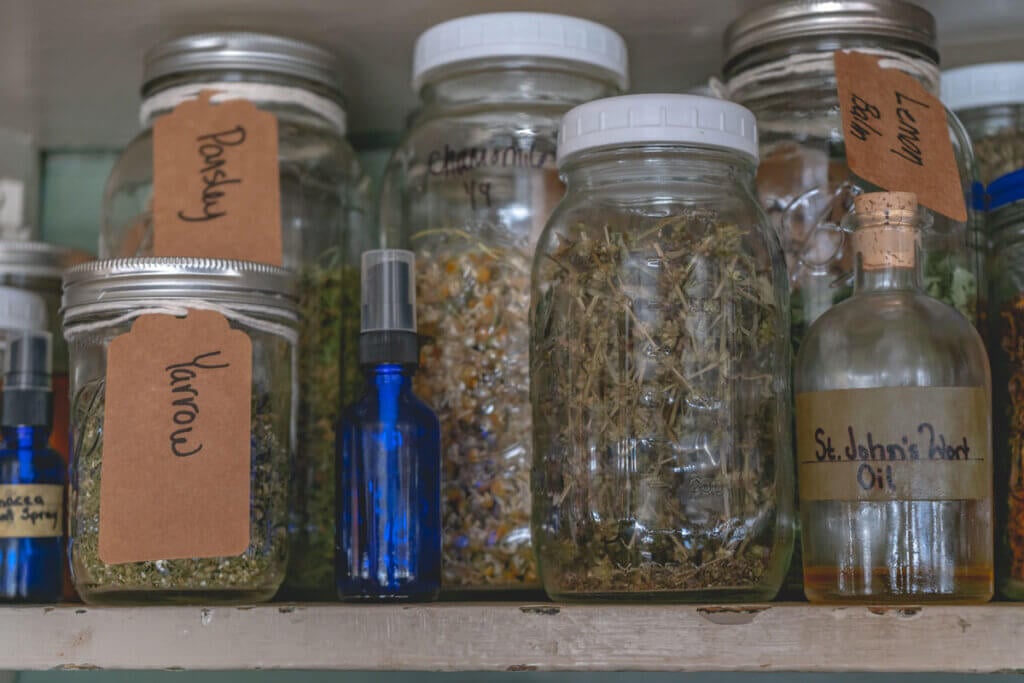
Preserving
There are several options to preserve tulsi for long-term storage. Here are a few we use:
- Dehydration – Tulsi dehydrates well to make herbal capsules. Unfortunately, it won’t retain its flavor well for culinary uses.
- Freeze Drying – Understanding the difference between freeze-drying and dehydrating tulsi is important. Tulsi rehydrates well, returning it to a fresh texture and flavor.
- Salt – Preserving herbs in salt is an ideal method for tulsi. This technique has been around for years because it works well when using tulsi in savory recipes.
- Freezing – Freezing herbs is also a good method to preserve tulsi. Add a frozen cube of basil for a quick fresh infusion of flavor in kombucha, herbal iced tea, soups and other cuisines.
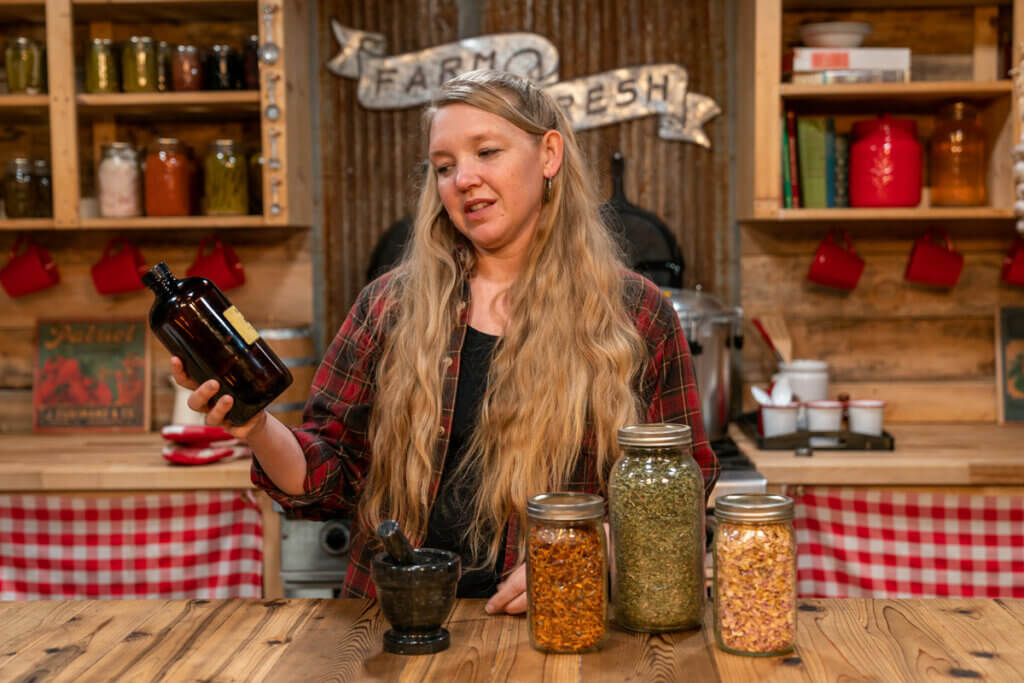
Using Herbal Medicine
When considering growing an herb that benefits your garden and your health, tulsi (holy basil) is an excellent choice.
If you are ready to learn more about double-duty herbs that can heal your family naturally, the Herbal Medicine Cabinet: Colds and Flu class is designed just for you.
In this masterclass, I have created a simple system that will allow you to confidently stock your herbal medicine cabinet. You’ll use simple herbs to safely, naturally and effectively treat your family this cold and flu season.
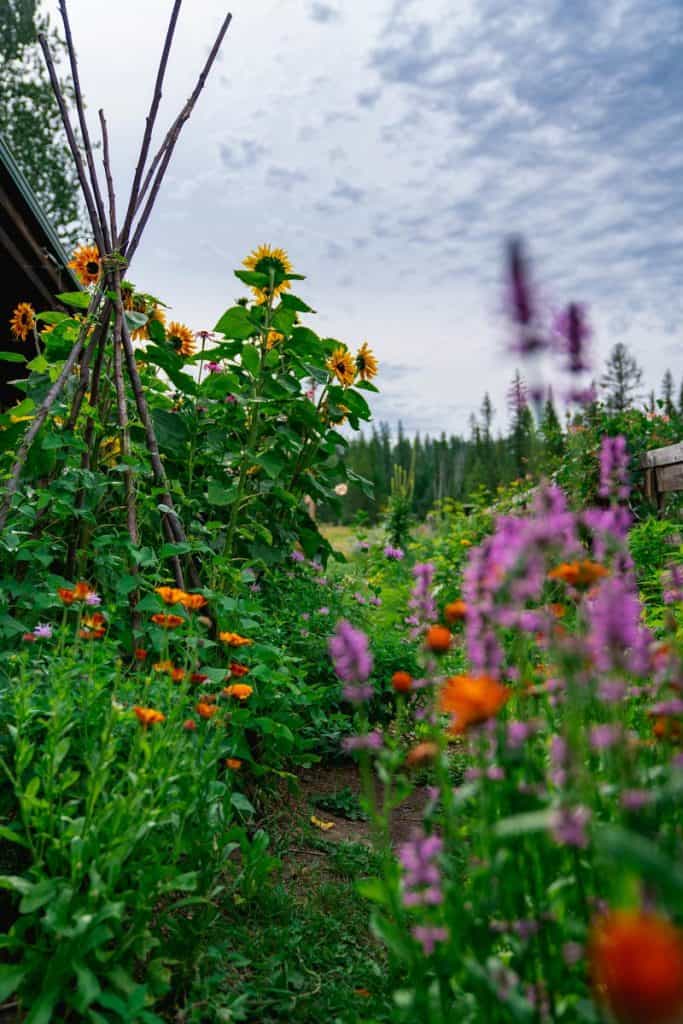
Other Articles You May Enjoy
- Designing an Old Fashioned Cottage Garden
- Direct Primary Care – Going “Off-Grid” with Your Health Care
- 15 Medicinal Herbs to Grow & Their Common Uses
- How to Use Herbal Medicine Safely at Home
- A Guide to Propagating Herbs (Never Buy Herbs Again)
- How to Grow Sweet Basil
- How to Grow Chives (Plant, Harvest, Preserve)
- How to Boost Your Immune System Naturally in 7 Simple Steps











